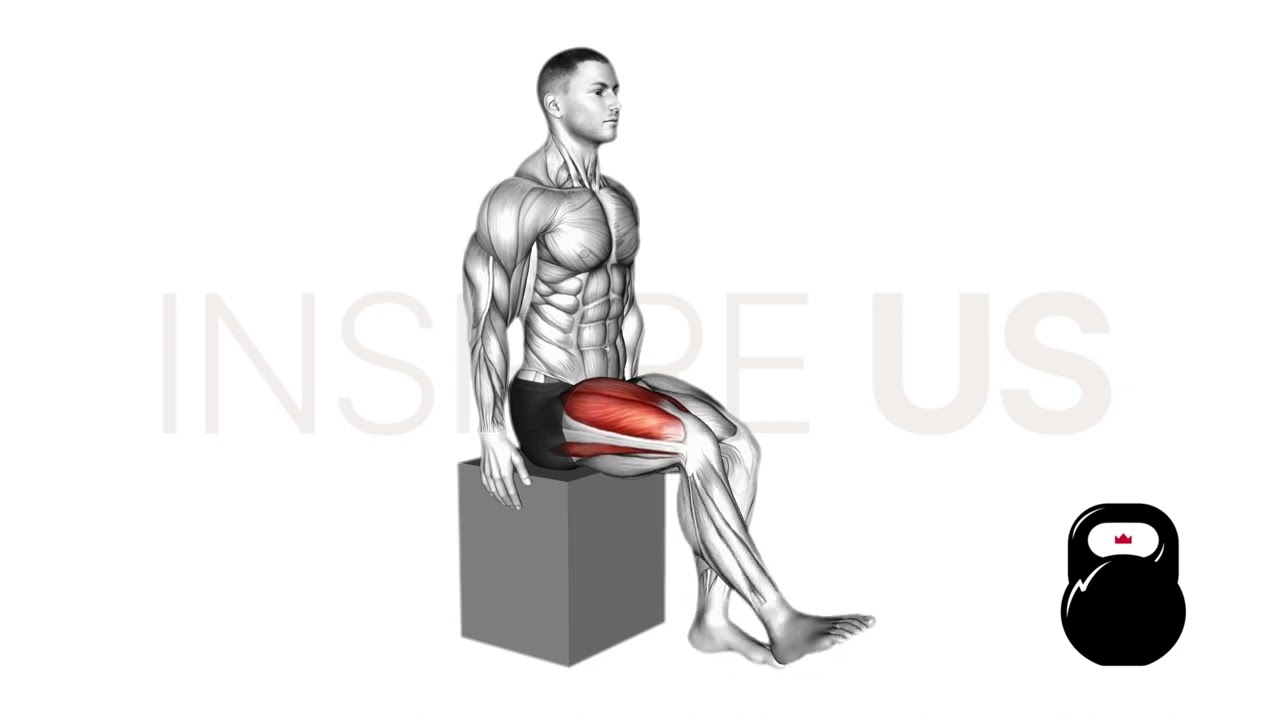Seated Knee Extension: Benefits, Muscles Worked, and More
Used as a resistance training exercise, diagnostic tool and rehabilitation prescription - the seated knee extension is the very definition of a multi-faceted movement.
Chances are, you’re either here looking to build up your quadriceps muscles with a low-impact exercise, or because a medical professional has prescribed you the seated knee extension as part of a recovery regimen.
In this article, we will explain how to go about performing the exercise, a few common mistakes made in execution and how it can be beneficial for your needs.
What is the Seated Knee Extension Exercise?
The seated knee extension is exactly as it sounds - a single-joint isolation exercise performed for the purposes of strengthening, stretching or training the muscles related to knee extension.
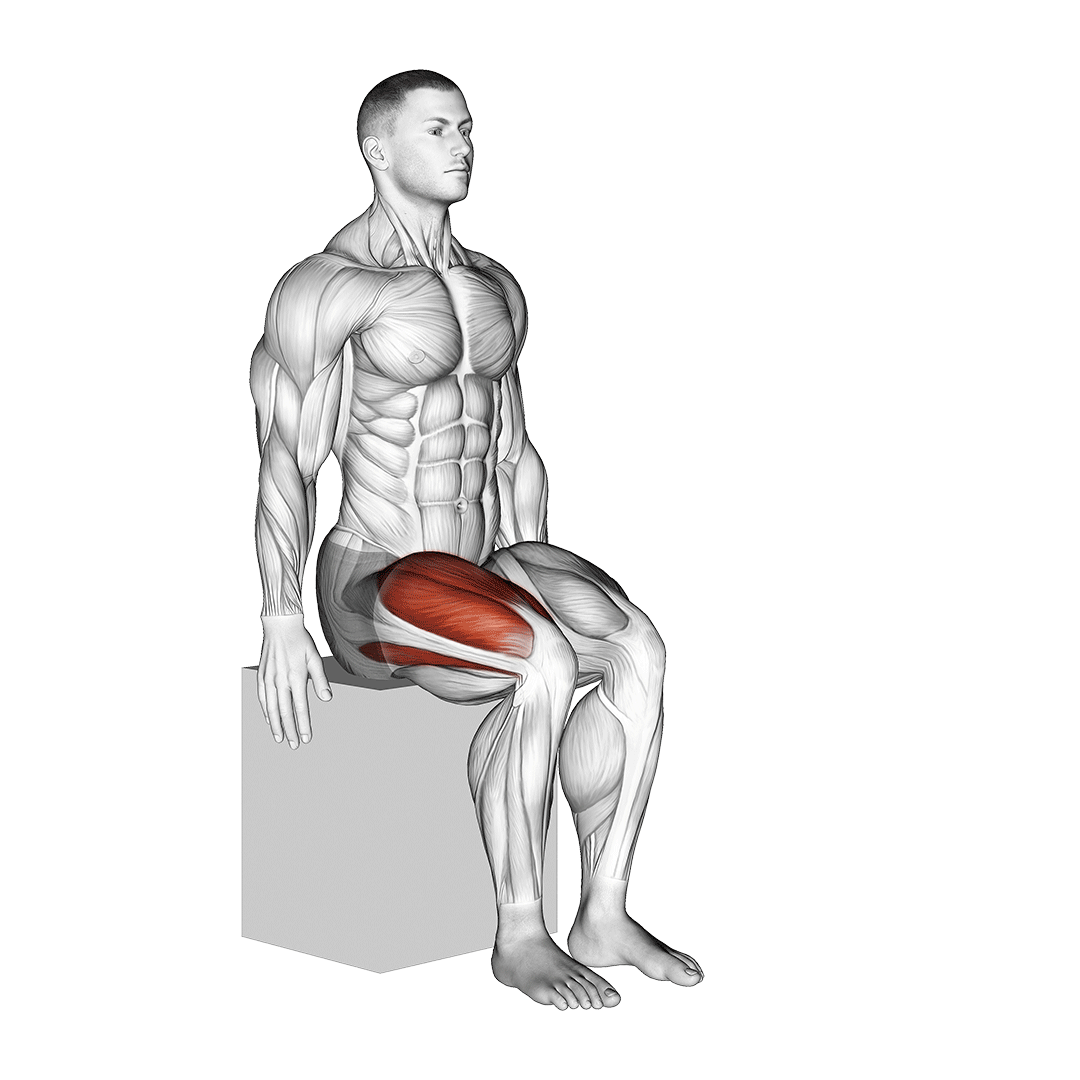
This exercise is most often programmed with time under tension in mind, and as such will feature little-to-no resistance and only a moderate volume of repetitions performed with each set.
Seated knee extensions are occasionally performed with additional resistance in the form of ankle weights or resistance bands, but individuals with a history (or currently suffer from) injuries relating to the knees or quadriceps are advised to avoid doing so unless otherwise directed by their physician.
Is the Seated Knee Extension Right for You?
Like many things, the answer is that it depends.
Seated knee extensions are considerably low-impact for healthy individuals, but may not be appropriate for particularly severe cases of knee injury - or those who have recently undergone knee surgery.
So - if you’re a healthy bodybuilder or athlete wishing to strengthen their quadriceps? Then the seated knee extension is perfect.
Otherwise, it may be best to first consult a medical professional.
How to do Seated Knee Extensions
Seated knee extensions will require a seat (preferably armless) and enough space to fully extend one leg forwards.
To perform seated knee extensions, you will need to sit in the chair with your hips and back kept firmly in place, both feet flat on the floor with the toes pointing forwards.
Then, gripping both sides of the seat for support, extend one leg outwards until the calf is approximately parallel to the floor - or until reaching the limit of your range of motion.
Keep in mind that the only moving joint should be your knee, and that the hips should not dynamically contribute to this action whatsoever.
Hold this position for several seconds while squeezing your quadriceps muscle before returning the foot to the ground.
What Muscles do Seated Knee Extensions Work?
Seated knee extensions are an isolation exercise, meaning that they only target a single muscle group - that being the quadriceps femoris.
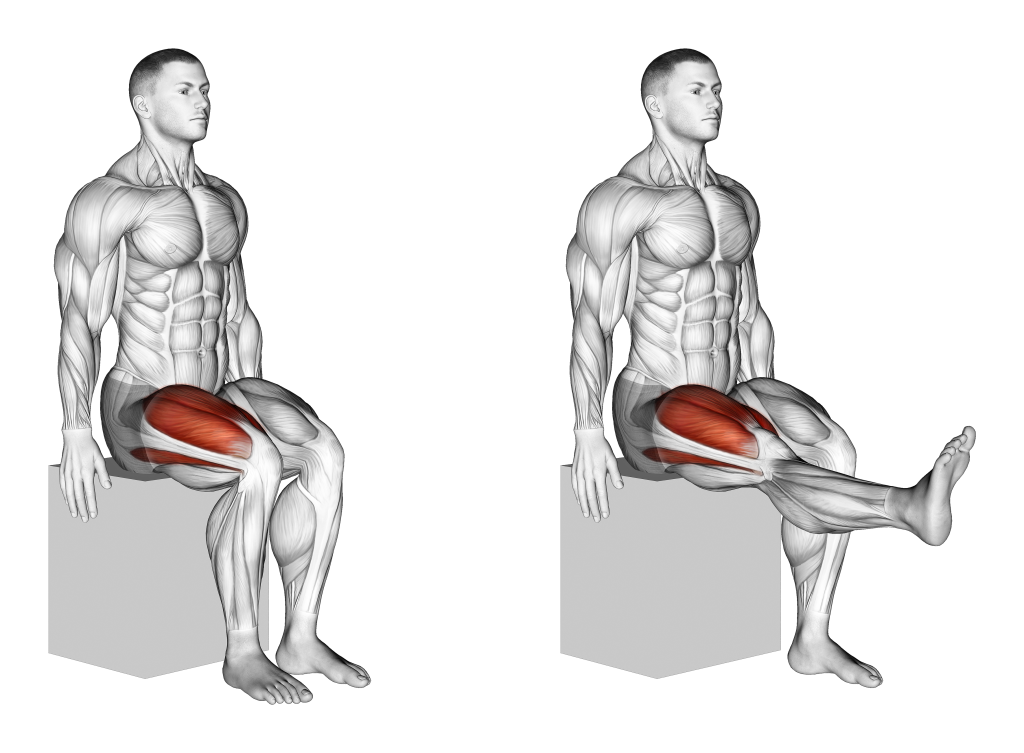
The quadriceps femoris is located along the front and sides of your thigh, and is (among other things) responsible for extending your knee joint. Strengthening it is essential for general lower body locomotion - especially walking and similar actions that involve raising the leg.
What are the Benefits of Seated Knee Extensions?
If you were prescribed seated knee extensions, chances are you already know about its benefits. But if you don’t, the following are a few key advantages that it offers.
Strengthens the Thigh Muscles
Seated knee extensions work the quadriceps femoris muscle - reinforcing its capacity to contract, the force with which it is capable of outputting and helping you consciously recruit it as well.
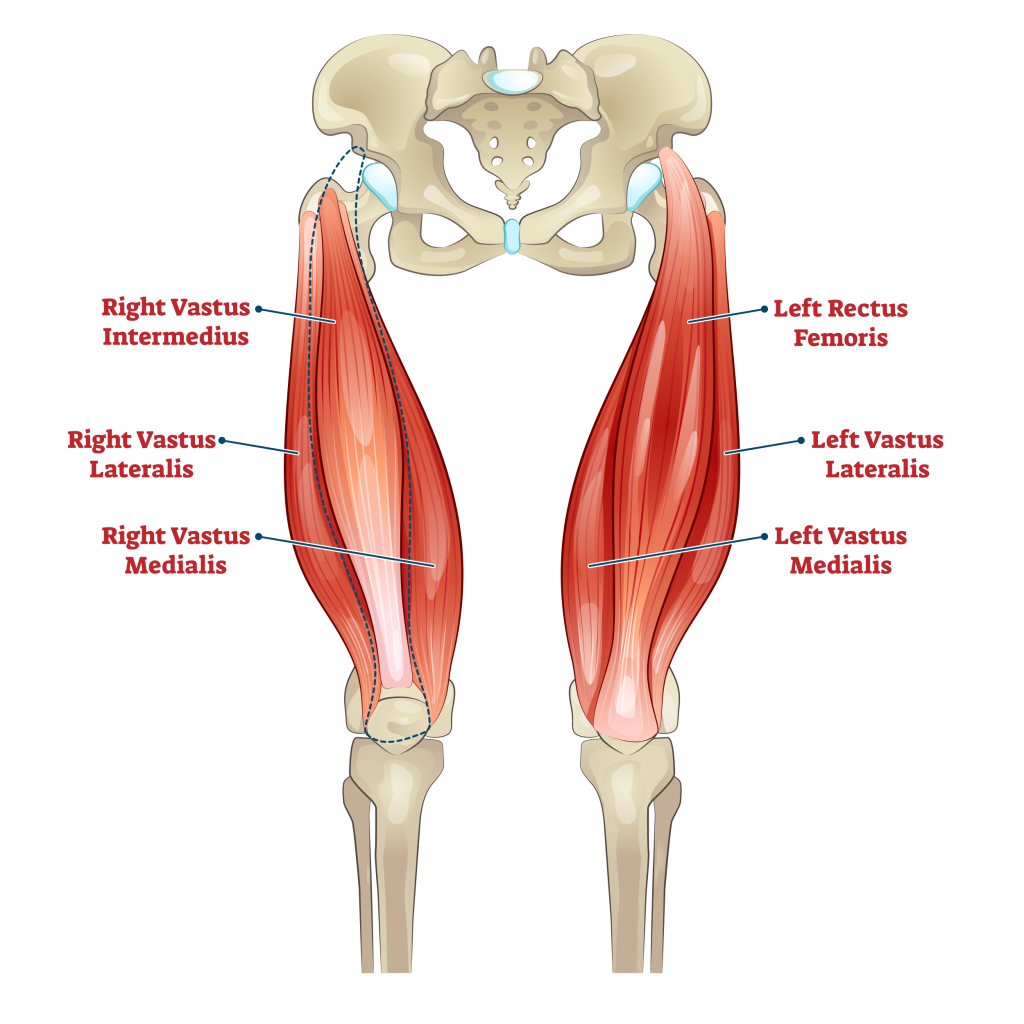
For individuals with poor knee stability or limited quadriceps strength, the seated knee extension is an excellent low-impact exercise for strengthening the legs.
Just remember to get prior approval from a physician.
Improves Knee Range of Motion
The term “range of motion” or “ROM” is simply the span in which a certain part of the body can move.
In the case of a healthy person’s knee, this is approximately 0°-135° degrees, and allows for a variety of actions including squatting on the heels, lying flat on the back or leaping into the air.
Performing seated knee extensions can help stabilize and stretch the tissues of the knee in such a way that individuals who do not have a full range of motion will see improvements over time.
For the best results, it is best to combine the seated knee extension with careful mobility work.
Can be Modified for Athletes
Although the seated knee extension is primarily performed by physical rehabilitation patients, it does indeed see some use in athletic training and can be highly effective for strengthening your quads.
If you’re perfectly healthy, it’s pretty likely that the conventional seated knee extension does not feature enough resistance to pose a challenge.
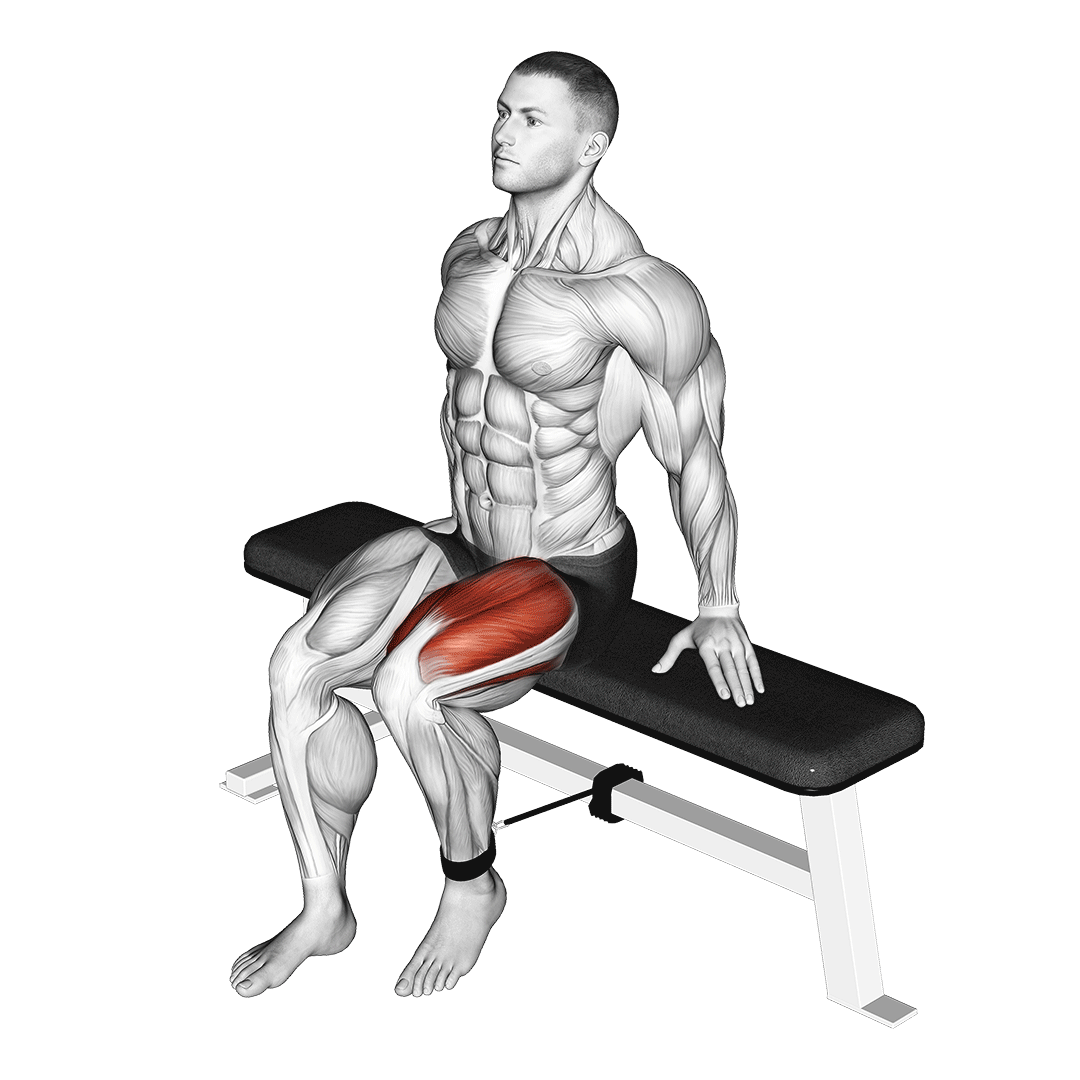
To correct this, many weightlifters and athletes will up the intensity of the exercise by wrapping a resistance band around the chair and ankles, or by placing an ankle weight on the shins. As an alternative, much the same training stimulus can also be achieved with a leg extension machine.
Helps Counter Arthritis, Aging and Other Degenerative Problems
While it indeed depends on the individual and their condition, regularly performing low-impact exercises like the seated knee extension can help counteract the effects of aging on the tissues of the body.
This is especially important in cases of other degenerative issues, such as osteoarthritis where the cartilage of the knee joint begins to weaken.
Common Seated Knee Extension Mistakes
The following are the most common mistakes you’re likely to make when doing seated knee extensions.
Pushing Through Poor Mobility and Pain
If at any point during seated knee extensions you begin to feel pain, it may be time to stop performing the exercise.
Pain, severe stiffness or a “catching” feeling could be indicative of your body being unprepared for completing a full knee joint range of motion, and could lead to a worsening of your condition - if not the development of concurrent problems.
It is best to only perform seated knee extensions within your knee’s current maximum range of motion, and to avoid pushing through any discomfort that you may feel.
Lifting the Opposite Foot
In order to truly isolate the muscles of the quadriceps and focus on one leg at a time, it is important to plant the foot of the opposite leg on the ground. This will not only ensure proper isolation, but will also aid in maintaining stability by preventing you from shifting your hips to compensate.
Pointing the Toes and Ankles
While some exercisers will be tempted to point their toes or otherwise extend their foot as they perform the exercise, doing so may negatively affect the stability of the movement and otherwise draw emphasis away from the quadriceps muscle.
For the most efficient seated knee extension, it is best to keep the toes loose but pointed forward, and the ankle in a neutral position.
Should You Do the Seated Knee Extension with Weight?
Because the seated knee extension is used for both rehabilitation and resistance training, it can get confusing deciding on whether to perform the exercise with the addition of ankle weights or resistance bands.
In truth, the answer is actually quite simple.
If you suffer from an injury of the knee or quadriceps - or are otherwise performing seated knee extensions for rehabilitation purposes - then it is best to perform the exercise without weight unless instructed to by a medical professional.
Conversely, if you are an uninjured individual including the seated knee extension into your workout regime so as to build stronger and bigger quadriceps, then it is better to perform the exercise with additional resistance. Doing so will aid in inducing muscular hypertrophy.
Frequently Asked Questions (FAQ)
What Muscles do Seated Knee Extensions Work?
Seated knee extensions target the quadriceps femoris muscles at the front of your thighs. In particular, the rectus femoris and vastus muscles of the quads are targeted to the greatest extent.
What are Knee Extension Exercises?
Knee extension exercises are resistance training movements involving straightening of the legs - often for the purposes of developing and rehabilitating the quadriceps muscles. A few good examples are seated knee extensions, the leg extension machine and straight leg raises.
What is the Purpose of Seated Knee Extensions?
Seated knee extensions act as both a rehabilitation tool for the knees and as a method of training the quadriceps femoris muscles for greater mass and performance.
Final Thoughts
The seated knee extension is an invaluable tool for both rehabilitation and training, but should not be the sole exercise utilized in either regard. In the case of physical rehabilitation, regular mobility work and other methods of reinforcing the knee are often prescribed alongside the seated knee extension.
On the opposite end - for resistance training, exercises targeting the rest of the lower body’s musculature should be performed with the seated knee extension for a more comprehensive workout.
Regardless of purpose, remember to pay close attention to proper form, and to stop performing the exercise if any indications of injury arise.
Contact a physician prior to attempting this exercise.
References
1. Maratt, Joseph. M.D. (2023) “ Seated Knee Flexion & Extension” Retrieved on 14/6/23 (https://www.marattmd.com/learn/rehab-tka-seated-knee-extension.php)
2. Boston University Sargent College College of Health and Rehabilitation Services N.D. “Exercise 3: Knee Extension” ENACT Retrieved on 15/6/23 (https://www.bu.edu/enact/living-well/exercise-and-arthritis/exercises/exercise-3-knee-extension/)

